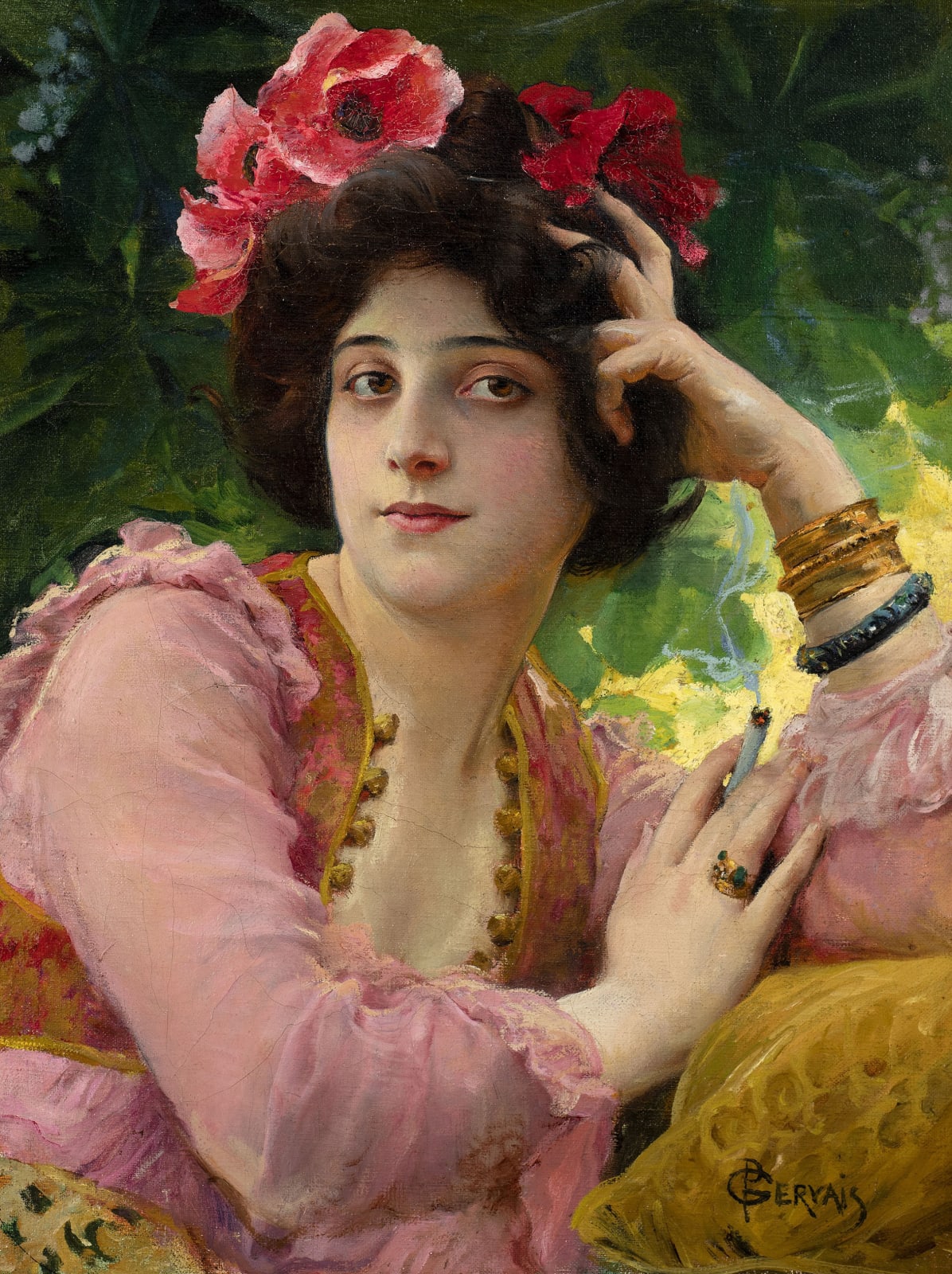Paul Jean Gervais (1859 – 1944)
A lady in a pink chemise smoking
Signed lower right: PGervais
Oil on canvas
61 x 46.4 cm (24 x 18 ¼ in.)
Provenance:
A lady in a pink chemise smoking
Signed lower right: PGervais
Oil on canvas
61 x 46.4 cm (24 x 18 ¼ in.)
Provenance:
Private Collection, Paris, until 2022.
Nonchalant yet effortlessly composed, Paul Jean Gervais’ beguiling beauty takes a moment of repose to enjoy a cigarette, held gracefully between her forefingers. Her floral crown and classically beautiful countenance evoke a figure from Greco-Roman mythology, relaxing against a backdrop of lush vegetation. The result is a seductive composition eliciting a dream-like idyll.
The painting was created for the 1901 advertising campaign of JOB, a popular brand of cigarette rolling paper (fig. 1). Founded in 1838, by the late 1890s JOB had capitalised on the growing power of advertising, commissioning leading Art Nouveau figures to illustrate posters, post-cards and calendars. Alongside Gervais, who was commissioned multiple times, major graphic artists such as Alfons Mucha (fig. 2), Ramon Casas, Manuel Orazi, Edgar Maxence, Jules Chéret and Armand Rassenfosse illustrated one or several posters for the company. Gervais was particularly admired by the Bardou family who owned JOB, so much so that the artist was entrusted with the decoration of the family’s mansion in Perpignan.
Fig. 1, Paul Jean Gervais, poster for JOB, 1901, 57 x 43 cm,
Private Collection
Fig. 2, Alfons Mucha, poster for JOB, 1898, 141 x 93 cm,
National Gallery of Australia
As in Gervais’ painting, the most frequently utilised image in these posters was that of a voguish female delicately holding a cigarette. These images suggested a certain independence, liberty and sophistication, challenging the widely held view at the time that females who smoked were either low-lives and criminals or, if of the upper classes, then eccentrics and feminists.[1] JOB’s publicity campaigns were wildly successful and marked the company out as a modern brand.
Gervais was born in Toulouse and studied at the academy there before moving to Paris, enrolling at the Beaux-Arts under Jean-Léon Gérôme. A fashionable artist in his day, Gervais can be considered an important exponent of a late academic style, his paintings symbolising the virtues of civilisation and love through the depiction of nubile beauties (fig. 3). Much in demand as a muralist, Gervais exhibited regularly at the Salon and was appointed professor of the École de Beaux-Arts in 1904. In 1908 he won the Legion d’Honneur, though by this date his works, and those of many of his Salon contemporaries, were beginning to fall out of favour.
Fig. 3, Paul Jean Gervais, Titiana, 1897, oil on canvas, 520 x 350 cm,
Musée des Augustins, Toulouse
